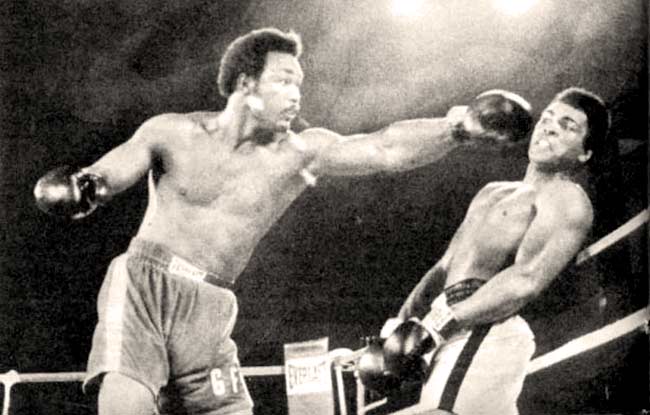Wikimedia Commons / CC-BY-SA-3.0 / GFDL
1 – Muhammad Ali KOs George Foreman in ‘The Rumble in the Jungle’
The Rumble in the Jungle took place in Kinshasa, Zaire (now the Democratic Republic of the Congo) on October 29, 1974.
The fight began at 4 am local time on October 30, in order to appear on television in the U.S at 10 pm Eastern Standard Time. The attendance was 60,000.
It was held in the 20th of May Stadium (now the Stade Tata Raphaël), with the undefeated world heavyweight champion George Foreman against Muhammad Ali, the former heavyweight champion.
Ali had endeared himself to the people of Zaire in the build-up, turning them against Foreman. A popular chant of theirs, leading up to and during the fight, was: “Ali, boma ye!”, meaning “Ali, kill him.”
The fight will be remembered for Ali’s rope-a-dope tactics, which saw him lean against the ropes absorbing Foreman’s thunderous punches to the body, leading to Foreman punching himself to exhaustion.
Ali constantly taunted Foreman during clinches, telling him to throw more punches, and an enraged Foreman responded by doing just that.
Nearing the end of the eighth round, Ali came off the ropes to deliver a devastating combo, knocking Foreman to the canvas.
The referee stopped the bout with 2 seconds left in the round, making it one of the most iconic sporting moments in history.
Ali had lost his title 7 years earlier when the government accused him of draft-dodging and the boxing commission took away his license. His victory in Zaire made him only the second dethroned champ in history to regain his belt.
The fight has gone down as one of, if not, the greatest sporting event of the 20th century.
2 – US President Nixon is Forced to Resign as a Result of the Watergate Scandal

On August 5, 1974, the White House released previously unknown audio tape from June 23, 1972. It was recorded only a few days after the Watergate break-in and documented the initial stages of the cover-up.
It revealed Nixon and his aides had conducted a meeting in the Oval Office, where they discussed how they would stop the FBI from continuing their investigation, recognizing their position in the scandal may be revealed.
Before this, President Nixon had denied any involvement in the scandal.
He claimed there were no political motivations in his instructions to the CIA, and claimed he had no knowledge before March 21, 1973, of involvement by senior campaign officials.
The contents of this tape persuaded Nixon’s own lawyers that the President had lied to the nation, his closest aides, and to his own lawyers for more than two years. The tape destroyed Nixon politically.
Ten congressmen who had voted against three articles of impeachment in the House Judiciary Committee announced they would now support impeachment when the vote was taken in the full House.
Nixon decided to resign in a nationally televised address from the Oval Office on the evening of August 8, 1974.
He was succeeded by Vice President Gerald Ford as President, who on September 8, 1974, issued a full and unconditional pardon of Nixon, immunizing him from prosecution for any crimes he may have taken part in.
In a televised broadcast to the nation, Ford explained that he felt the pardon was in the best interest of the country.
3 – Birmingham & Guildford Pub Bombings by the IRA in England
The Guildford pub bombings occurred on 5 October 1974. The Provisional Irish Republican Army detonated two bombs at two pubs in Guildford, Surrey, southwest of London.
The pubs were targeted because they were popular with British Army personnel stationed at the nearby barracks. Four soldiers and one civilian were killed, whilst a further sixty-five were wounded.
The first bomb detonated at 8:30 pm. It killed a civilian, two members of the Scots Guards and two members of the Women’s Royal Army Corps.
The second pub was evacuated after the first blast, and thus there were no serious injuries when the second bomb exploded at 9:00 pm.
The ‘Maguire Seven’ were falsely convicted of providing bomb-making material in March 1976 and sentenced to between 4 and 14 years.
The ‘Guildford Four’ were falsely convicted of the bombings in October 1975 and sentenced to life in prison. They were held in prison for 15 years.
All the convictions were overturned years later after it was proved the Guildford Four’s convictions had been based on confessions obtained by torture, whilst evidence clearing the Four was not reported by the police.
The Birmingham pub bombings occurred on 21 November 1974, when bombs exploded in two public houses in central Birmingham, England. The explosions killed 21 people and injured 182 others.
The Provisional Irish Republican Army has never officially admitted responsibility for the Birmingham pub bombings, but a former senior officer of the organization confessed to their involvement in 2014.
Six Irishmen were arrested within hours of the blasts, and in 1975 sentenced to life imprisonment for the bombings. The men, who became known as the ‘Birmingham Six’.
They maintained their innocence and insisted police had coerced them into signing false confessions through severe physical and psychological abuse.
After 16 years in prison and a lengthy campaign, their convictions were declared unsafe and unsatisfactory, and quashed by the Court of Appeal in 1991.
The episode is seen as one of the worst miscarriages of justice in British legal history.
4 – The Terracotta Army is Discovered in China
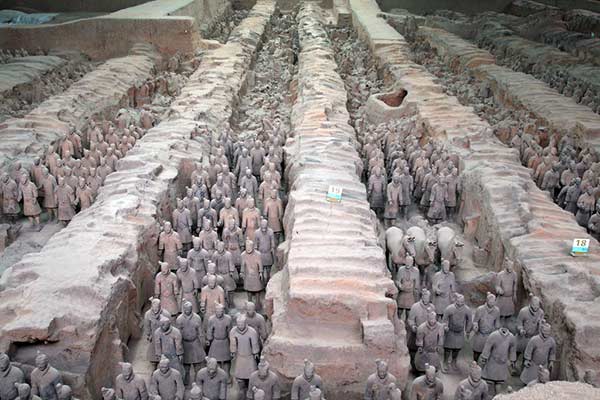
The Terracotta Army is a collection of terracotta sculptures depicting the armies of Qin Shi Huang, the first Emperor of China.
It is a form of funerary art buried with the emperor in 210–209 BCE and whose purpose was to protect the emperor in his afterlife.
The figures were discovered on March 29, 1974, by local farmers in Lintong District, Xi’an, Shaanxi province.
The figures vary in height according to their roles, with the tallest being the generals. The figures include warriors, chariots, and horses.
Estimates from 2007 were that the three pits containing the Terracotta Army held more than 8,000 soldiers, 130 chariots with 520 horses and 150 cavalry horses, the majority of which remained buried in the pits nearby Qin Shi Huang’s mausoleum.
Other terracotta non-military figures were found in other pits, including officials, acrobats, strongmen, and musicians.
5 – British Lord ‘Lucky’ Lucan Disappears
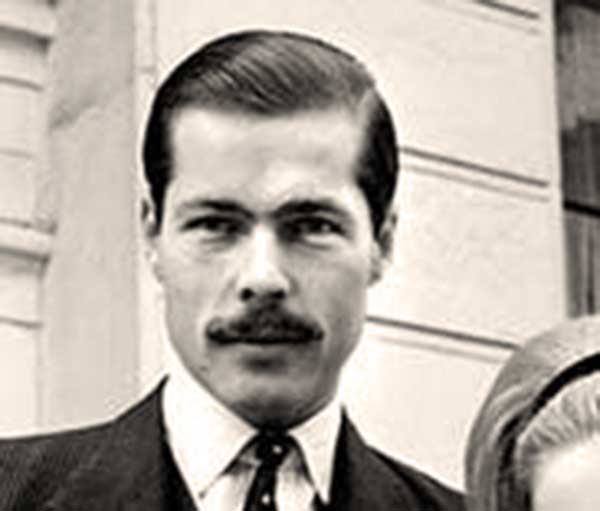
Richard John Bingham, 7th Earl of Lucan, known as Lord Lucan, was a British peer suspected of murder who disappeared in 1974.
Once considered for the role of James Bond in the cinematic adaptations of Ian Fleming’s novels, Lucan was noted for his expensive tastes, racing powerboats and driving an Aston Martin.
In 1963 he married Veronica Duncan, with whom he had three children. When the marriage collapsed in 1972, he moved out of the family home in London’s Belgravia.
A bitter custody battle ensued, which he lost. He began to spy on his wife and record their telephone conversations, apparently obsessed with regaining custody of the children.
On November 7, 1974, the children’s nanny was bludgeoned to death in the basement of the Lucan family home. Lady Lucan was also attacked and later identified Lucan as the assailant.
Lucan is known to have stopped briefly at a friend’s house, before leaving, never to be seen again.
The car was found abandoned, stained with blood and containing a piece of lead pipe similar to one found at the crime scene.
A warrant for Lucan’s arrest was issued a few days later. In his absence, the inquest into Rivett’s death named him as her murderer, the last occasion in Britain a coroner’s court was allowed to do so.
Within Britain, there has been continuing interest in Lucan’s fate. Since Rivett’s murder, hundreds of reported sightings have been made in various countries around the world, but none have been substantiated.
6 – Japanese Soldier, Hiro Onoda, Surrenders 29 Years After World War II
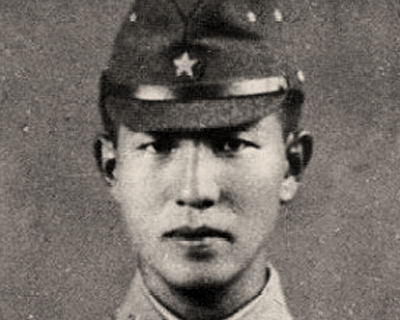
Onoda held the rank of second lieutenant in the Imperial Japanese Army, fought in World War II, and was a Japanese holdout who did not surrender in 1945.
After Onoda spent 29 years holding out on Lubang Island in the Philippines, his former commander traveled from Japan to personally issue orders relieving him from duty in 1974.
Onoda was so popular following his return to Japan that some Japanese urged him to run for the National Diet (Japan’s legislature).
He also released a ghostwritten autobiography, No Surrender: My Thirty-Year War, shortly after his return, detailing his life as a guerrilla fighter in a war that was long over.
Onoda was reportedly unhappy being the subject of so much attention and was troubled by what he saw as the withering of traditional Japanese values.
In April 1975, he left Japan for Brazil, where he raised cattle.
After reading about a Japanese teenager who had murdered his parents, Onoda returned to Japan in 1984 and established the ‘Onoda Shizen Juku’ educational camp for young people.
7 – Cyclone Tracy Virtually Destroys Darwin, Australia
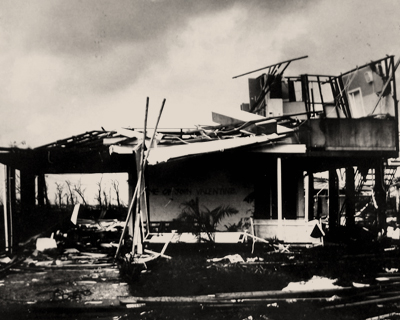
Cyclone Tracy was a tropical cyclone that devastated the city of Darwin, Northern Territory, Australia from Christmas Eve to Christmas Day, 1974.
After forming over the Arafura Sea, the storm moved southwards and affected the city with Category 4 winds, with evidence also to suggest that it reached Category 3 on the Saffir-Simpson Hurricane Scale when it made landfall.
Tracy killed 71 people, caused A$837 million in damage (1974 dollars), or approximately A$4.45 billion (2014 dollars).
It destroyed more than 70 percent of Darwin’s buildings, including 80 percent of houses.
Tracy left more than 41,000 of the 47,000 inhabitants of the city homeless prior to landfall and required the evacuation of over 30,000 people.
Most of Darwin’s population was evacuated to other Australian cities, and many never returned to the city.
8 – The Ethiopian Civil War Begins After Coup Against Emperor Haile Selassie

The Ethiopian Civil War began on September 12, 1974, when a pro-Soviet Marxist–Leninist military junta, the “Derg”, led by Mengistu Haile Mariam, deposed Emperor Haile Selassie and established a one-party communist state.
On November 23, 1974, sixty former high officials of the imperial government were executed without trial.
While imprisoned in the Grand Palace, Haile Selassie died on August 27, 1975, aged 83.
State media reported he died of respiratory failure, though his doctor rejected the government version of his death, and it remains unclear as to how exactly he died.
The civil war lasted until the Ethiopian People’s Revolutionary Democratic Front, a coalition of rebel groups, overthrew the government in 1991. The war left at least 1.4 million people dead.
At the time, Ethiopia was one of only three countries in the world to have the title of Emperor for its head of state, together with Japan and Iran.
The Central African Empire was also implemented between 1976 and 1979 by Emperor Bokassa I.
